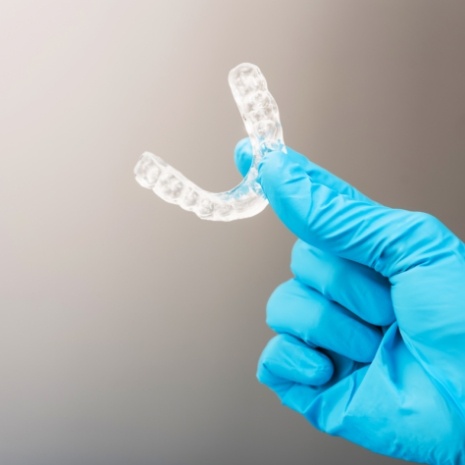TMJ Treatment – Laguna Niguel, CA
Lasting Relief for Jaw Pain and Headaches
Chronic pain of any kind can eventually take its toll on your body, mental state, and quality of life. If you have persistent jaw pain or suffer from constant headaches, Dr. Anderson can check to see if the problem lies in your TMJ. He can then develop a treatment plan based on the root of your TMJ pain so that you don’t have to worry about pain or limited jaw movement on a daily basis. Call today to schedule a consultation to discuss your options for TMJ treatment in Laguna Niguel, CA.
Why Choose Orange County Center for Sedation Dentistry for TMJ Treatment?
- Fully Personalized Treatment Plans
- Friendly, Experienced Dentist and Team
- Sedation for Anxious Patients
What is TMJ?

Put your fingers right beneath your ear and open your mouth; do you feel hinges moving? That is your TMJ, or temporomandibular joint for short. It’s one of the most complex joints in the body, and there are various ways it can become strained or injured. If you have a stiff and painful jaw, frequent headaches, persistent earaches, or pain in your neck and other areas, you could have a TMJ disorder (or TMD for short).
How We Treat TMJ

First, we need to confirm that the source of the problem really is your TMJ. We’ll take X-rays of the joint and test the mobility of the jaw to see if there are any problems. The treatment we recommend will depend on what we find. For example, sometimes the problem might lie in the way your teeth come together, which calls for an occlusal adjustment. In other cases, you can wear an occlusal splint to protect your teeth and hold the jaw in a more relaxed position.
TMJ Treatment FAQs

Patients who come to us for TMJ disorder often have quite a few questions about the condition and how we treat it. Naturally, we’re always happy to answer such questions, and we encourage you to let us know if you have any inquiries of your own. Below, you will find a list of questions that we have often heard from our patients in the past along with our responses. We suggest checking to see if your own question has already been addressed here before reaching out to us.
Can TMJ Disorder Be Cured Permanently?
A TMJ disorder isn’t necessarily something you will need to live with for the rest of your life. In some cases, the discomfort will eventually go away on its own. In situations where treatment is needed, it should be noted that while BOTOX® injections can help reduce the pain you’re experiencing, the effects won’t last forever. In contrast, occlusal splints and occlusal adjustments can help address the underlying cause of your TMJ disorder, so they tend to yield more permanent relief.
Is TMJ Treatment Safe?
Professional treatment of TMJ disorder is generally considered quite safe, and you can count on our team to make sure every step of the process goes smoothly. Do note that it’s generally better to start with conservative forms of treatment (with occlusal splints and occlusal adjustments being viewed as particularly reliable options) before moving on to more invasive approaches such as surgery. Rest assured that we will always carefully examine your jaw and consider all of the available options before we suggest any type of TMJ treatment.
How Long Does TMJ Treatment Take?
As you can probably guess, the answer to this question is not set in stone for each patient. It largely depends on which type of treatment is performed and how advanced your TMJ disorder is. That said, here is a general idea of what you can expect:
- BOTOX® injections can often be performed in about 30 minutes. Relief usually comes several days later, and the results can last for three to six months at a time.
- If you are given an occlusal splint for your TMJ disorder, you may need to wear it for a few weeks or even several months to achieve the desired results. In many cases, the relief can last the rest of your life.
- With occlusal adjustments, the specific changes required can affect the amount of time it takes to experience relief, but you generally won’t have to wait too long.
Can TMJ Disorder Be Treated Without Surgery?
It is generally preferred to use nonsurgical methods to treat TMJ disorder whenever possible. With the surgical approach, permanent changes to the jaw need to be made; as such, experts prefer to address the problem with more conservative methods first. It’s best to consider TMJ surgery as a last resort that should only be tried if other forms of treatment have failed.




